Part 1 of 2 Parts
Scientists at the Culham Centre Fusion for Fusion Energy laboratory in England have broken the record for the amount of energy produced during a controlled, sustained fusion reaction. The Joint European Torus (JET) in England produced fifty-nine megajoules of energy over five seconds. Some media outlets have called the experiment a “breakthrough” and it has caused a lot of excitements among physicists.
The JET experiment demonstrates a remarkable advancement in understanding the physics of nuclear fusion. It also shows that the new materials used to construct the inner walls of the fusion reactor worked as the scientists intended.
Nuclear fusion is a merging of two atomic nuclei into a single compound nucleus. In this process, a great deal of energy is released. A fusion power plant would capture the energy in the form of heat and use it to generate electricity. Our Sun and the stars are powered by nuclear fusion.
There are several different ways to create reactors that can safely control the fusion process on Earth. In the approach taken for the JET, powerful magnetic fields are used to confine atoms until they reach a high enough temperature for them to fuse. The fuel used in many experimental fusion reactors consists of two different isotopes of hydrogen. They are called deuterium which has a neutron in the nucleus in addition to the proton and tritium which has two neutrons in the nucleus in addition to the proton.
In order for a fusion reaction to be successful, the fuel atoms must become so hot that electrons are expelled from the atom. The result is a plasma which is a collection of positive ions and electrons. The plasma is heated until it reaches temperature of over two hundred million degrees Fahrenheit.
To control fusion on Earth, one of the first and most popular reactor designs is called a tokamak which uses magnetic fields to confine the plasma. Magnetic field lines wrapping around the inside of the donut behave like train tracks that the ions and electron follow. The injection of energy into the plasma heats it. When adequate temperatures are reached, the fuel particles are accelerated to such high speeds that when they collide, they fuse. The energy that is released is primarily in the form of fast neutrons.
During the fusion process, fuel particles can gradually drift away from the hot, dense core and eventually collide with the inner wall of the fusion containment vessel. In order to prevent the degradation of the wall due to these collisions, reactors are constructed so that they channel the wayward particles towards a heavily armored chamber called the divertor. This pumps out the diverted particles. It also removed excess heat to protect the tokamak.
A major limitation of past tokamaks has been the fact that divertors cannot survive the constant bombardment of the particles for more than a few seconds. To construct a tokamak that will be able to produce continuous power, engineers need to build a tokamak containment vessel that will be able to survive for years at the extreme temperatures and pressures necessary for fusion.
Please read Part 2
Blog
-
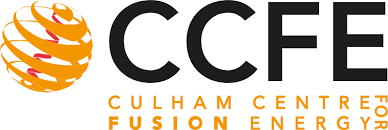
Nuclear Fusion 174 – Researches At JET In England Report Record Breaking Fusion Power Generation – Part 1 of 2 Parts
-
Nuclear News Roundup Apr 7, 2022
Hungary receives nuclear fuel from Russia by air -foreign minister reuters.com
IAEA seeks early visit to assess radiation levels around Chernobyl world-nuclear-news.org
New satellite imagery shows activity at North Korean underground nuclear test site kesq.com
Putin might turn to weapons of mass destruction if Russia doesn’t win in eastern Ukraine, historian Ferguson says cnbc.com
-
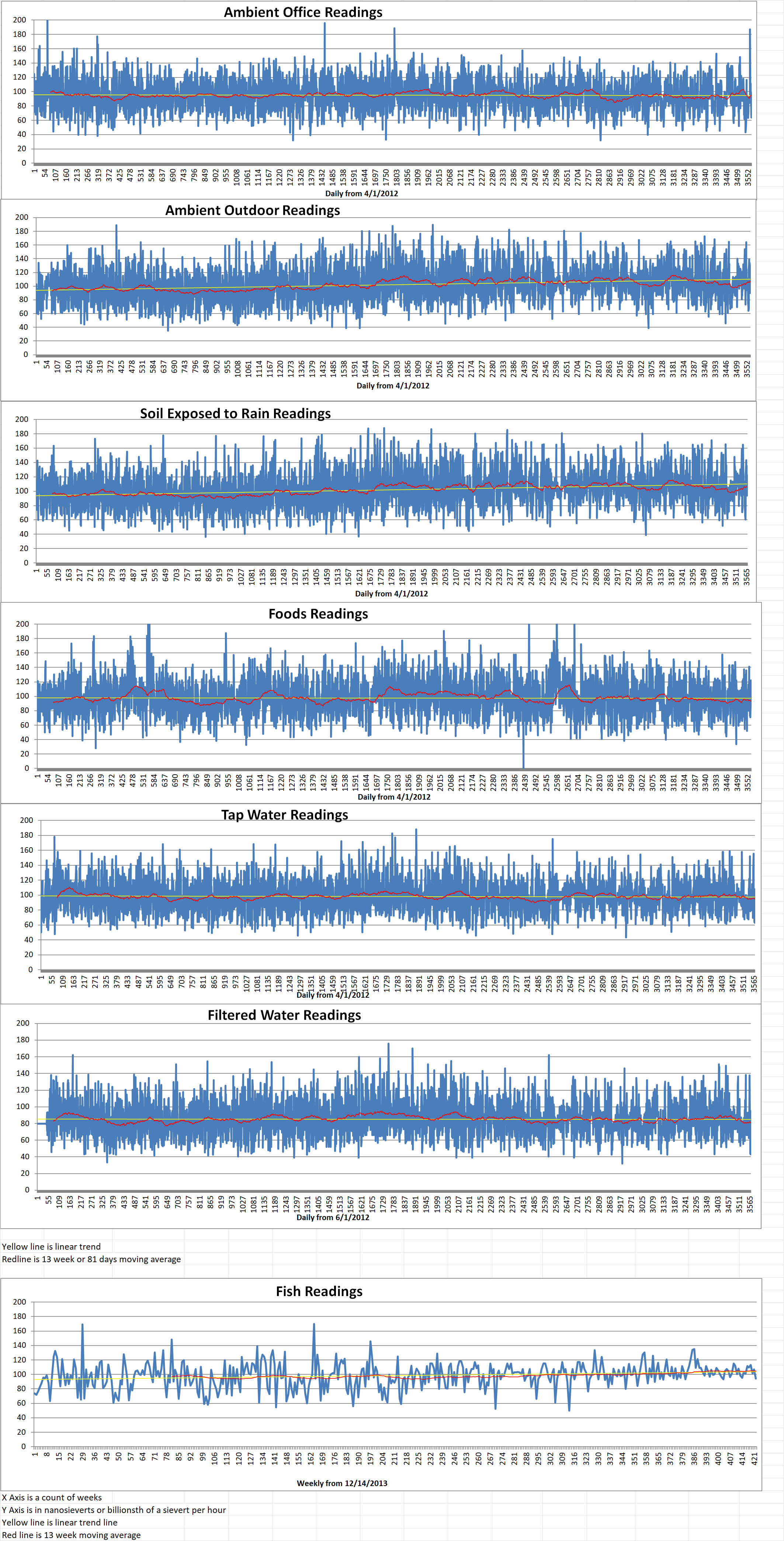
Geiger Readings for Apr 7, 2022
Ambient office = 64 nanosieverts per hour
Ambient outside = 103 nanosieverts per hour
Soil exposed to rain water = 105 nanosieverts per hour
Tomato from Central Market = 122 nanosieverts per hour
Tap water = 93 nanosieverts per hour
Filter water = 85 nanosieverts per hour
-

Nuclear Reactors 1015 – X-energy Developing A TRISO Fuel Manufacturing Facility in Tennessee
X-energy is the inventor of the Xe-100 high temperature gas cooled small modular reactor (SMR). They announced on April 4th that their wholly owned subsidiary, TRISO-X LLC, has selected the Horizon Center Industrial Park in Oak Ridge to site their TF3 plant which will initially produce eight tons of fuel per year. This is enough to provide fuel for twelve Xe-100s. The commercial facility’s cross cutting design will enable the manufacture of fuel for any number of advanced or small nuclear reactors based on Tristructural isotropic (TRISO) fuel. Construction is expected to begin this year with a start up as soon as 2025.
TRISO fuel particles consist of a “kernel” of uranium oxycarbide (or uranium oxide) surrounded by layers of carbon and silicon carbide. This provides containment for fission projects and is stable up to very high temperatures. Fuel for X-energy’s Xe-100 SMR consists of spherical pebbles which are each embedded with eighteen thousand TRISO particles. Each fuel pebble is about two and a half inches in diameter.
TF3 will be the first US Nuclear Regulatory Commission (NRC) Category II-licensed TRISO-based fuel fabrication facility. It will utilize uranium enriched less to less than twenty percent uranium-235 to manufacture nuclear fuel products for a variety of advanced and SMRs. It will also make specialty fuels for nuclear space projects.
In October 2020, the U.S. Department of Energy (DoE) selected X-energy as one of two recipients to receive funding under its Advanced Reactor Demonstration Program (ARDP) for the construction of a demonstration plant that can be operatioinal in seven years.
Under the project, X-energy is to deliver a commercial four-unit power plant based on the Xe-100. In addition, they are to provide a commercial-scale TRISO fuel fabrication facility. In April 2021, Energy Northwest, Grant County Public Utility District and X-energy formed the Tri-Energy Partnership for the purpose of constructing a plant based on the Xe-100 design at Energy Northwest’s existing Columbia nuclear site in Washington state.
Pete Pappano is the President of TRISO-X. He said, “The Department of Energy calls TRISO the most robust nuclear fuel on Earth. TRISO is a technology that’s been developed and improved over 60 years. Our facility will bring this game-changing fuel to market, beginning with a proprietary spherical fuel pebble for X-energy’s Xe-100 reactor and its utility partner Grant County Public Utility District, in Washington state.”
TR3 will also be used to continue to support government funded projects. These include mobile reactors for the military or nuclear space projects. TRISO-X is already operating two facilities at Oak Ridge. The first is the TRISO-X Pilot Facility, located inside the Oak Ridge National Laboratory. The second is the TRISO-X Research and Development Center in the Centrus Technology Manufacturing Center. TF3 is expected to generate more than four hundred new jobs in the Oak Ridge area and attract in the neighborhood of three hundred million dollars of investments.
TRISO-X submitted its license application to the NRC on April 6th. This application is the first of its kind for a facility dedicated exclusively to handling and processing uranium of such enrichment. The license application took about three years to write. It costs almost twenty million dollars and the NRC’s review process is expected to take from two to three years. If the application is approved, TF3 will become the first 10 CFR 70 Category II licensed fuel facility in the U.S.
The NRC review and TRISO-X’s interaction with the NRC over this period are part of X-energy’s cooperative agreement with ARDP. Andrew Griffith is the U.S. acting assistant secretary for Nuclear Energy. He said that the licensing milestone is a “critical step” towards achieving the program’s goals. -
Nuclear News Roundup Apr 6, 2022
Iran says it handed over documents on nuclear activities to UN dw.com
UK banks on nuclear to escape Russian fuels politico.eu
Orano contracted to defuel Diablo Canyon world-nuclear-news.org
EDF looks to extend Sizewell B operation world-nuclear-news.org
-
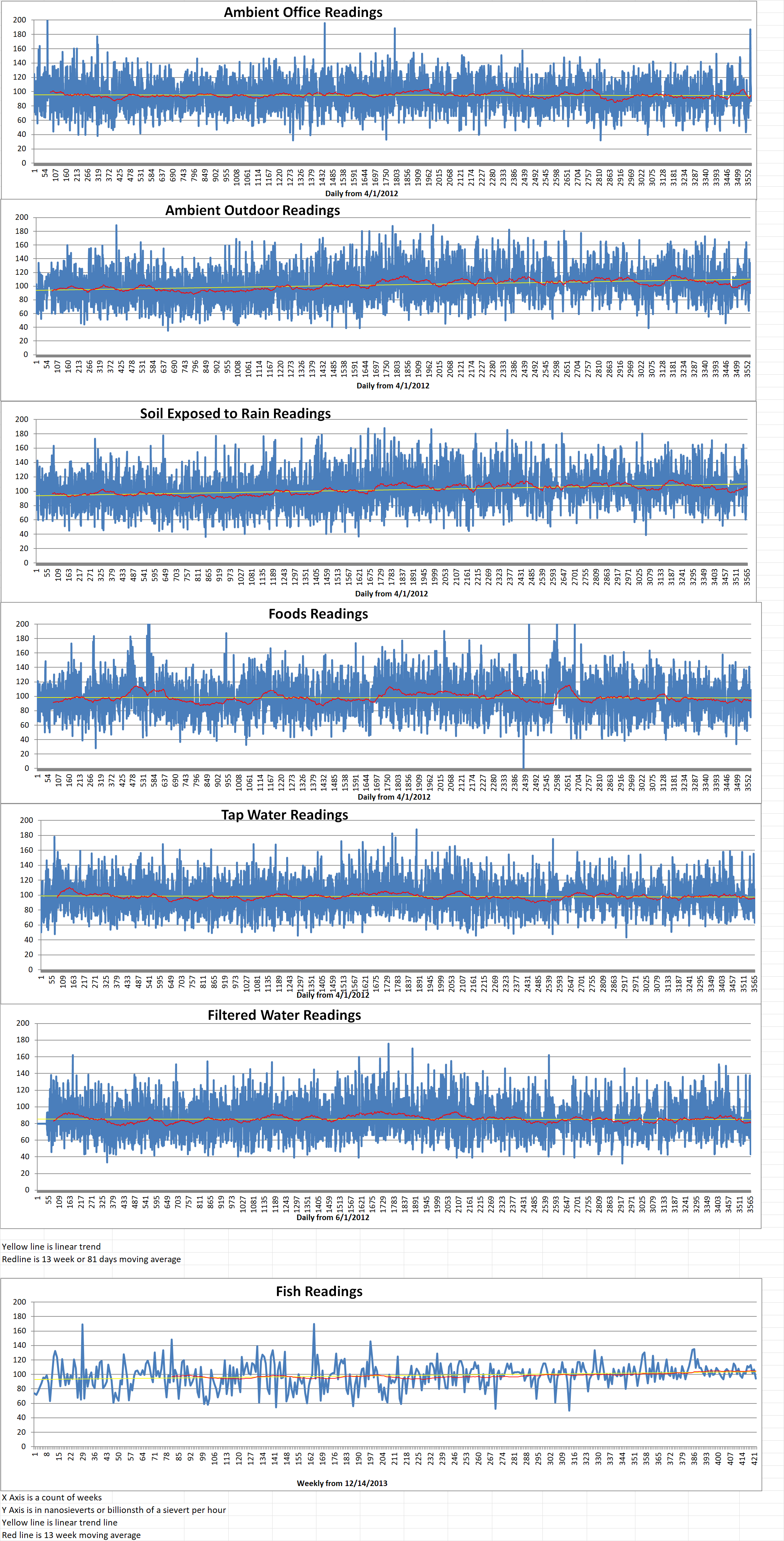
Geiger Readings for Apr 6, 2022
Ambient office = 87 nanosieverts per hour
Ambient outside = 123 nanosieverts per hour
Soil exposed to rain water = 122 nanosieverts per hour
Romaine lettuce from Central Market = 102 nanosieverts per hour
Tap water = 63 nanosieverts per hour
Filter water = 43 nanosieverts per hour
-
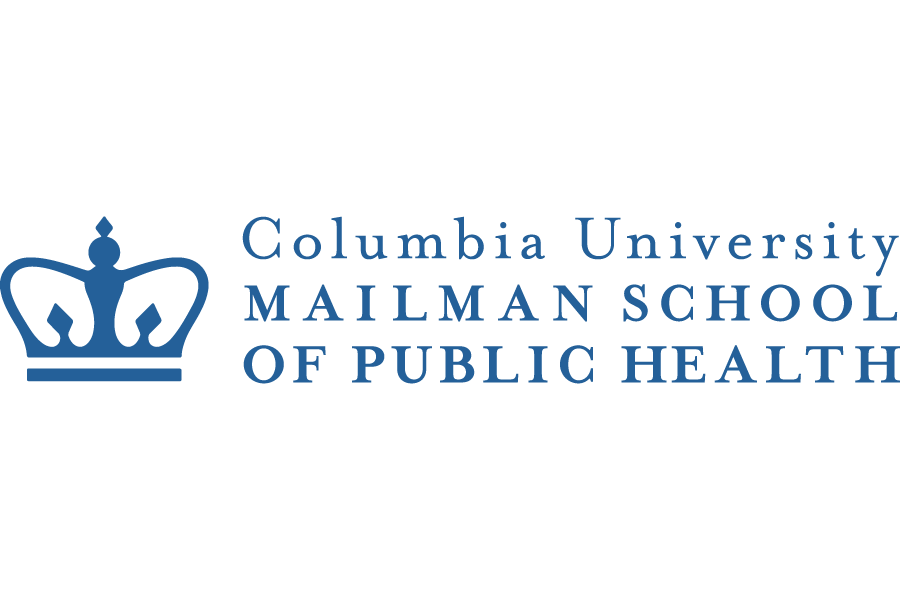
Columbia University Researchers Review Metal Contaminants In Community Water Systems
Researchers at the Columbia University Mailman School of Public Health recently conducted a study on metal concentration in U.S. community water systems (CWS) and patterns of inequality. The study revealed that metal concentrations were particularly concentrated in CWSs serving semi-urban, Hispanic communities independent of location or region, highlighting environmental justice concerns. These types of communities had the highest levels of uranium, selenium, barium, chromium, and arsenic concentration.
Even if the concentration is low, uranium represents an important risk factor for the development of chronic diseases. Unfortunately, until now little epidemiological research has been done on chronic water uranium exposure despite the potential health effects of uranium exposure from CWSs. Uranium has been underappreciated in the literature as a major public drinking water contaminant. The results of the study have been published in the journal The Lancet Planetary Health.
Anne Nigra, Ph.D. is an assistant professor of Environmental Health Sciences at Columbia Mailman School of Public Health. She said, “Previous studies have found associations between chronic uranium exposure and increased risk of hypertension, cardiovascular disease, kidney damage, and lung cancer at high levels of exposure. Our objectives were to estimate CWS metal concentrations across the U.S, and identify sociodemographic subgroups served by these systems that either reported high metal concentration estimates or were more likely to report averages exceeding the US EPA’s maximum contaminant level (MCL).”
About ninety percent of U.S. residents depend on public drinking water systems. Most resident rely on CWS that that serve the same population year-round. The researchers evaluated EPA six-year review records for antimony, arsenic, barium, beryllium, cadmium, chromium, mercury, selenium, thallium, and uranium. They were trying to determine if average concentrations exceeded the maximum contaminant levels allowed by the EPA which regulates levels for six different classes of contaminants. The review included about thirteen million from one hundred and thirty-nine thousand CWS serving two hundred and ninety people annually. They created an online interactive map of estimated metal concentrations at the CWS and county levels to use in future analyses.
According to the report, two percent of community water systems reported average uranium concentrations from 2000 to 2011 which exceeded the EPA maximum contamination levels. Uranium was often detected during compliance monitoring. Arsenic, barium, chromium, selenium, and uranium concentrations were also disproportionately elevated in CWSs which served semi-urban, Hispanic populations. This raised concerns for these communities and the possibility of inequalities in public drinking water.
Nigra and her team found that the consistent association between elevated CWS concentrations and semi-urban, Hispanic communities suggested that concentration disparities are either a failure of regulatory policy or water treatment rather than underlying geology. Hispanic/Latin populations show numerous health disparities. These included increased mortality due to diabetes as well as liver, kidney and cardiovascular disease.
Niger said, “Additional regulatory policies, compliance enforcement, and improved infrastructure are therefore necessary to reduce disparities in CWS metal concentrations and protect communities served by public water systems with elevated metal concentrations. Such interventions and policies should specifically protect the most highly exposed communities to advance environmental justice and protect public health.” -
Nuclear News Roundup Apr 5, 2022
Nearly 70% of Americans are worried about a nuclear attack, according to APA survey. Here’s what could happen cnbc.com
MLAs should have a mature debate about nuclear power newsletter.co.uk
UK unveils plan to triple nuclear power capacity, uranium stocks march higher seekingalpha.com
US steel giant invests in NuScale world-nuclear-news.org
-
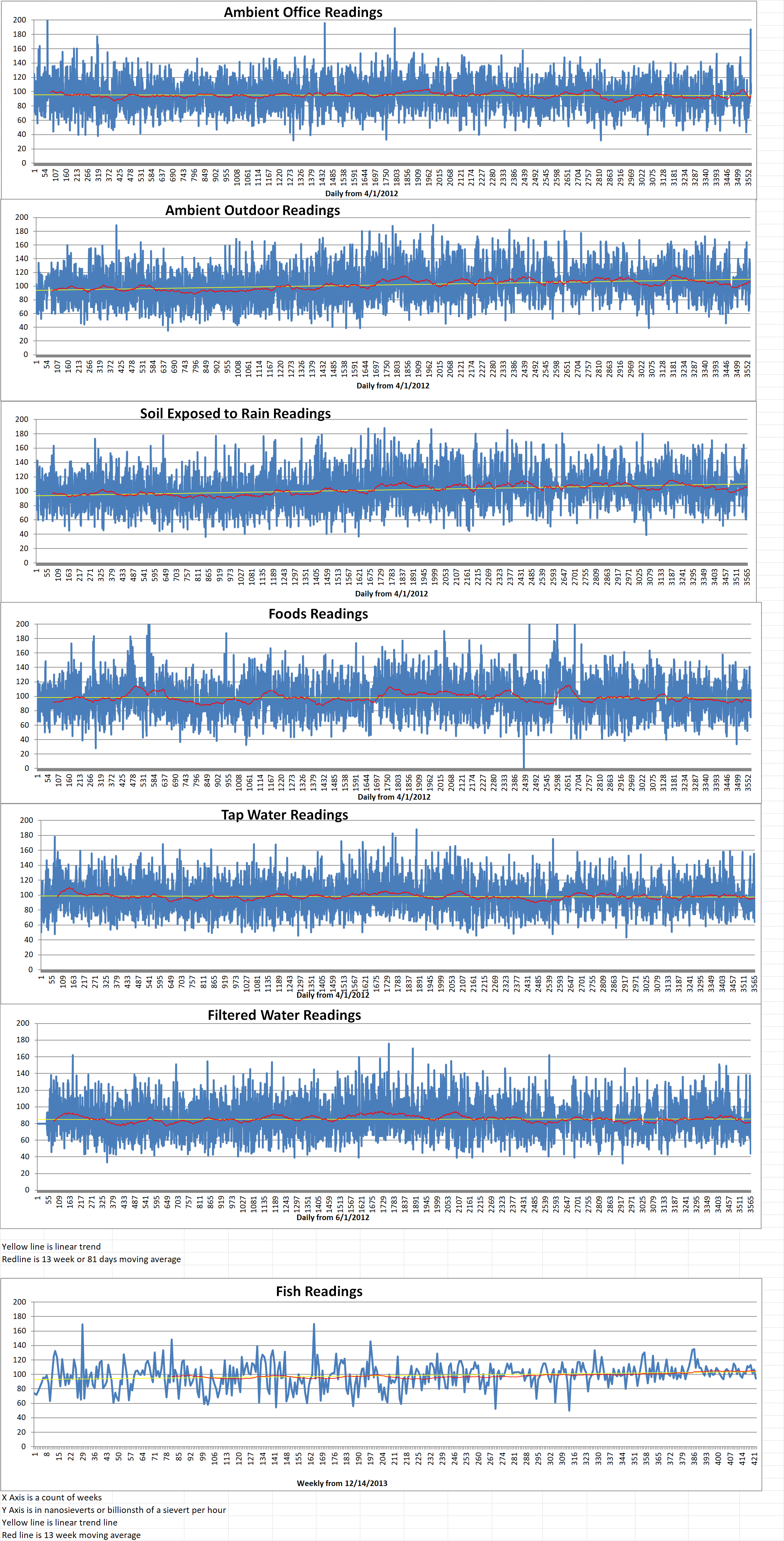
Geiger Readings for Apr 5, 2022
Ambient office = 98 nanosieverts per hour
Ambient outside = 90 nanosieverts per hour
Soil exposed to rain water = 94 nanosieverts per hour
Red bell pepper from Central Market = 109 nanosieverts per hour
Tap water = 64 nanosieverts per hour
Filter water = 44 nanosieverts per hour
-

Nuclear Reactors 1014 – Russia Is Turning Control Of Nuclear Facilities Back To Ukraine
The Russian troops who took and held the shuttered Chernobyl nuclear power plant have moved out and turned the plant back over to the Ukrainians on March 19th. The two hundred Ukrainians who were at the plant when the Russians took over on February 24th, were held hostage for twenty-five days with no relief workers allowed in. Many of the workers live in Slavutyhch which is outside the Chernobyl exclusion zone. The International Atomic Energy Agency (IAEA) said in its April 3rd update that Ukraine had told them that there were preparations to rotate staff at Chernobyl. This was to include an assessment of security for staff moving to and from Chernobyl.
The IAEA and the State Nuclear Regulatory Inspectorate for Ukraine (SNRIU) have both stressed the requirement for nuclear power plant staff to be well rested to reduce the risk that mistakes will be made in the management of the plant. The SNRIU also told the IAEA that it was analyzing the possibility of resuming regulatory control of Chernobyl now that Russian troops have departed.
Rafael Mariano Grossi is the Director General of the IAEA. Last week he held talks about safety measures and assistance that the organization could provide with senior Ukrainian officials during a visit to the Zaporozhe nuclear power plant in South Ukraine which is currently occupied by Russian troops.
Grossi also held talks with senior Russian officials in Kaliningrad and said that he had secured separate agreements with them relating to safety and assistance intended to protect nuclear facilities with both sides. It had originally been intended to secure a single three-party agreement but that would have taken longer to achieve because it would have required “draft after draft” being exchanged and reviewed. Grossi also said that he would “head an IAEA assistance and support mission to the Chernobyl nuclear power plant as soon as possible. It will be the first in a series of such nuclear safety and security missions to Ukraine.”
Following his meeting with the IAEA on Friday, Alexey Likhachev, the Director General of Rosatom, the Russian state-owned nuclear company, said he welcomed the “professionalism”, “balanced … depoliticized approach” and “concentration of attention and efforts on nuclear safety issues” of the IAEA. He categorized the talks as about “security, security and security”. He added that the “The main task of Rosatom is to do everything necessary and assist the IAEA in the safe operation of Ukrainian nuclear facilities.”
On April 3rd, the IAEA reported that it was still not receiving the automatic monitoring data transmissions from Chernobyl and its surrounding area, although it does continue to receive the data from the four operational nuclear power plants in Ukraine, including Zporozhe, which still remains under the control of the Russian Forces.
On April 4th, Ukraine’s nuclear power plant operator Energoatom, said that all four of Ukraine’s nuclear power plants were operating within safe limits. It said that seven of the fifteen nuclear power reactors in the country were currently operating. The other eight reactors are shut down for regular maintenance.
Energoatom said that the Zaporozhe staff are able to rotate but are searched at checkpoints. The Ukrainian staff are still required to gain approval from the Russian occupiers for technical decisions. Energoatom also said that the staff at Zaporozhe could not be well rested while living under Russian occupation.
